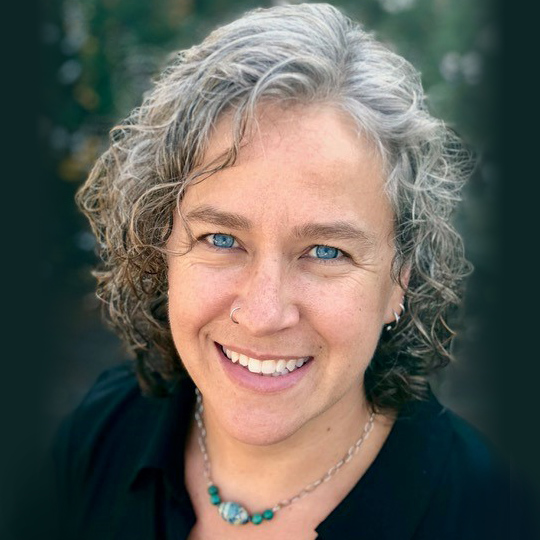Bringing Students Inside of Jewish Ritual—So They Can Own It

Sue Bojdak
Blessed are you, Adonai our God, Ruler of the universe, who separates:
–Challah and siddurs from toilet plungers and the internet
–Sunlight and candlelight from dark rooms and dark holes
–My bed and my couch from the classroom and the cafeteria
–Books, videogames, and fun from tables and textbooks
This is the blessing our seventh graders at Congregation Sha’ar Zahav in San Francisco wrote to accompany their new ritual for separating themselves from their gadgets. Their true genius came out in their original (and hastily improvised) musical number “Put the Gadget in the Bag,” created for the community presentation of their project-based learning on ritual.
Over eight weeks, each of our grade groups studied the architecture of Jewish ritual and then created a ritual of their own. Their learning was guided by the work of scholar Vanessa Ochs who, in her work Inventing Jewish Ritual, identifies four key ritual elements: text, object, action, and a big Jewish idea. All students, in kindergarten through seventh grade, spent four weeks exploring specific Jewish rituals, both the breadth of ritual in our tradition and the depth of specific rituals. Along the way they were introduced to these four elements. Meanwhile they crafted Jewish ritual objects in our nascent makerspace. They made tzedakah boxes, hanukkiyot, and kiddush cups.
Over winter break, students and their families were assigned the task of looking for Ochs’s four elements in the rituals they encountered in holidays such as Christmas, New Year’s Eve, and Tu Bishvat, along with other rituals or holiday practices in their families. One student discussed the ritual of meeting their grandma at the airport, including their grandma’s traditional text, “How big you’ve gotten!” and her action, a giant hug.
Students reconvened to begin tinkering with rituals. In the makerspace, they created original blessings for their homes, including art and text. Using LEGOs, they designed and reimagined Jewish ritual objects: tzedakah boxes with openings large enough for a dollar bill and a highly portable mezuzah on wheels (a nod to our transient population), among others.
In the classroom, they thought about which rituals either moved or bored them, or which big Jewish ideas compelled them. Our kindergarten, first grade, and second grade group developed a ritual of bal tashchit (not wasting), focused on Hanukkah candle reuse: What do you do with your extra Hanukkah candles? Well, you could melt them down, pour them into a repurposed glass jar, and craft a candle that will bring the light of Hanukkah through the rest of the darkness of winter. And now there’s a blessing for that.
Our third, fourth, and fifth grade group pondered the interconnectedness of nature and the Jewish mandate to “Choose life.” They crafted a communal tree of life upon which people can hang leaves of gratitude or intention, linking themselves to the One-ness. And there’s a blessing for that. Our sixth graders searched for a Yom Kippur hack to break up the monotony of the day and make teshuvah (repentence) more concrete. They developed a ritual of repair through collage (broken pieces reassembled as something more beautiful), inviting folks to work on teshuvah together or to explore their personal commitments to repair. After their presentation to the community, a parent volunteered to bring this ritual to our communal Yom Kippur practice this fall.
Our seventh graders only wanted to talk about gaming. So we challenged them to create a ritual about gaming. We offered them havdalah (the closing service at the end of Shabbat, literally meaning “separation”) as a model of a ritual of separation from something that we love but that is special because it is time-limited. We shared with them ReBoot’s cell phone sleeping bag developed for their National Day of Unplugging. They responded with a gadget bag of their own, an adapted blessing of separation, and an original musical number.
All of this learning is about bringing students inside of Jewish ritual so that they can own it. Yes, we want them to be familiar with traditional rituals and to understand how they work and what they are for. But, more than that, we want them to live richer, deeper, and more intentional lives by knowing how to make meaning through ritual. We want them to live their Jewish values not only at synagogue on Shabbat morning but also at home in front of their screens, on dark January nights after Hanukkah is over, and on the playground when they need to repair a friendship. By bringing them inside of Jewish ritual to create it rather than teaching them about Jewish ritual to perform it, we put them in the driver’s seat of their Jewish experiences from the youngest age and invite them to create a Judaism that permeates the fabric of their lives.
Sue Bojdak is the director of education at Congregation Sha’ar Zahav in San Francisco, a Reform congregation with a focus on serving the LGBTQ community.



